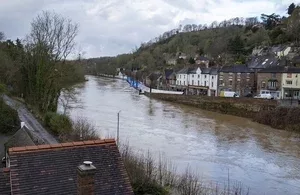A transformative £200m programme to improve the resilience of communities at risk of flooding and coastal change across England has been started.
The government’s new Flood and Coastal Resilience Innovation programme, which is managed by the Environment Agency, will help support 25 areas to pilot new and creative approaches to improve resilience to flooding and coastal change.
This could include planting trees and restoring peatland to reduce run-off into rivers or making changes in people’s homes so they can recover more quickly after flooding, said the government.
Lead Local Flood Authorities (LLFAs) and Coast Protection Authorities (CPAs) are being invited to express an interest in becoming one of these areas, with a deadline of 15 January 2021.
Each area will receive approximately £6m between 2021 and 2027. The funding is separate and in addition to the £5.2bn programme of investment in flood and sea defences announced by the government in the March budget. Areas will be selected based on a range of criteria, including repeated significant flooding in the past.
The rest of the money will support other flooding and coastal resilience activities including the development of long-term investment pathways in the Thames and Humber Estuaries, Yorkshire and the Severn Valley.
Environment Minister Rebecca Pow said: “The impact of flooding can be devastating, and even more so for those who have suffered repeatedly. Our ambitious new Flood and Coastal Resilience Innovation Programme will help communities test different approaches to become more resilient to flooding and coastal change alongside our record investment to build and maintain our flood defences.
“This funding will not only help to build long-term resilience in those 25 areas, but the evidence and learning from those projects will be used to inform future approaches to, and investments in, flood and coastal erosion risk management across the country.”
The funding can be used for projects to improve resilience to flooding and coastal erosion, such as: sustainable drainage systems and dual use water storage for flood attenuation and water resources, or rainwater harvesting, building community and voluntary sector capacity to respond and recover. It can also be used for proactive approaches for making existing homes and businesses community infrastructure more flood resilient, such as installing flood doors, raising electrics off ground level, and using materials such as tiles that increase resistance to damage from water
Environment Agency Chair, Emma Howard Boyd, said: “Most flood protection is created when it’s not raining. The homes and infrastructure built today should last 50 to 100 years, so while we prepare for flooding this winter, and create defences for the decades ahead, we also need to test resilience measures for a whole century of accelerating climate change.
In delivering this programme the Environment Agency plans to provide excellent examples of domestic leadership on adaptation and resilience ahead of COP26.
LLFAs and CPAs will work together with partners to develop their expressions of interest by 15 January. The 25 selected areas will receive some initial funding to develop their project proposals into more detailed plans during spring 2021, before the projects formally begin from summer 2021.



























